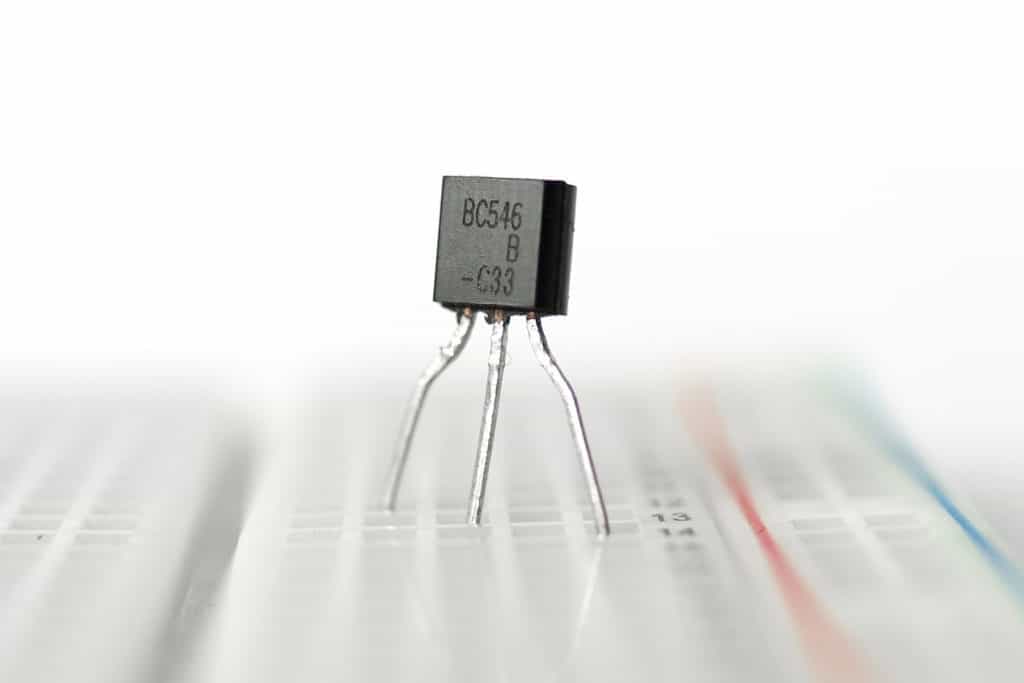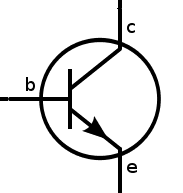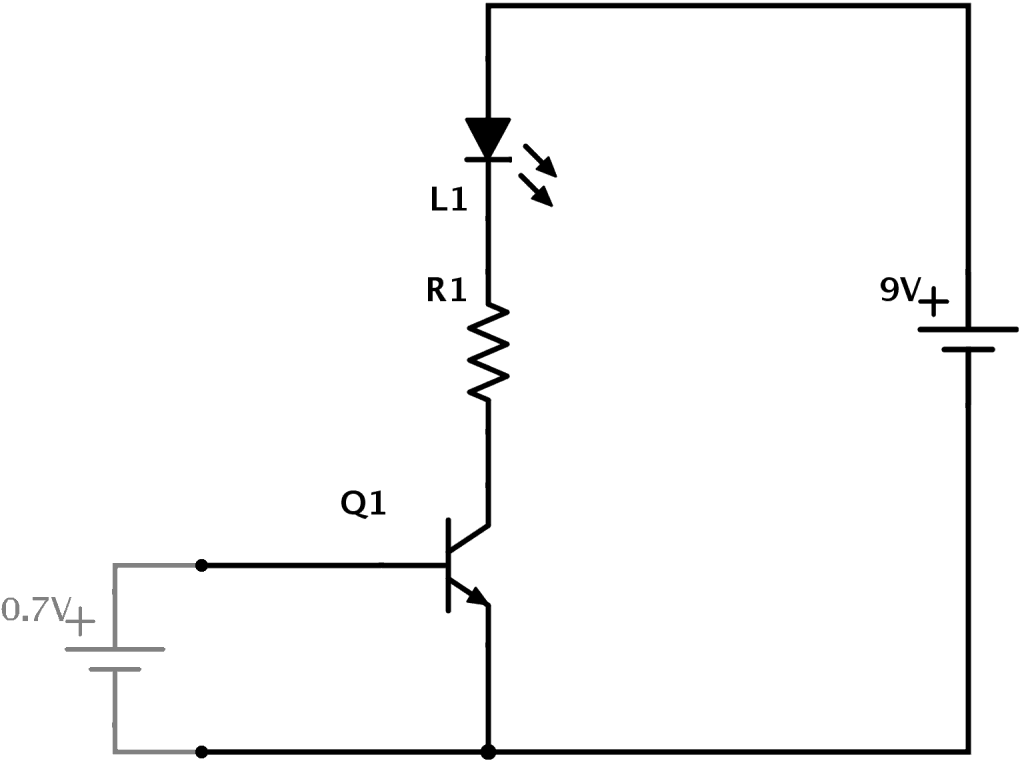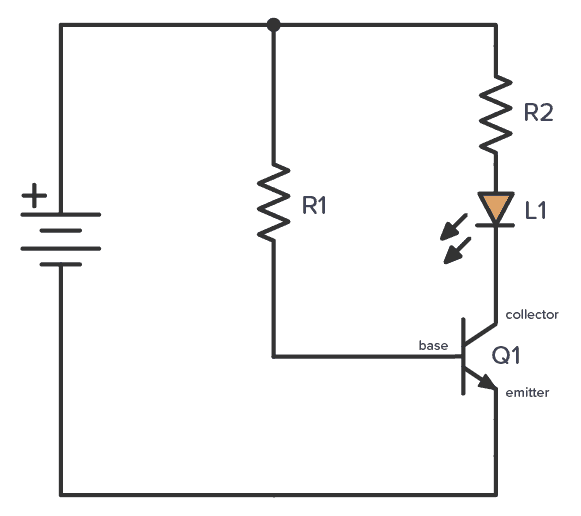
How transistors work is something everyone interested in electronics should learn. And it’s easy. You can turn a transistor on and off with a voltage.
And I’ll show you how both an NPN and a MOSFET transistor works.
The transistor is like an electronic switch. It can turn a current on and off. A simple way you can think of it is to look at the transistor as a relay without any moving parts. A transistor is similar to a relay in the sense that you can use it to turn something ON and OFF.
But a transistor can also be turned partly on, which is useful for building amplifiers.
How an NPN Transistor Works
The NPN transistor has three legs:
- Base (b)
- Collector (c)
- Emitter (e)

A current flowing from the base to the emitter “opens” the flow of current from the collector to the emitter.

How to get current flowing from base to the emitter?
That’s actually pretty easy. To get current flowing from base to emitter, you need a voltage of about 0.7V between the base and the emitter.
So when you apply 0.7V from base to emitter you will turn the transistor ON and allow a current to flow from collector to emitter.

In the example above you can see how transistors work. A 9V battery is connected to an LED and a resistor. But they are connected through the transistor. And no current flows through the transistor until it’s turned ON.
To turn the transistor ON you need to apply 0.7V from base to emitter of the transistor. Imagine you have a small 0.7V battery. When you connect the 0.7V battery from base to emitter, the transistor turns ON.
This allows current to flow from the collector to the emitter. And thereby turning the LED ON!
Check out the video explanation I made on the transistor a few years back (forgive the old-school quality):
Practical Example: Basic NPN Transistor Circuit
Since most of us don’t have a 0.7V battery, how do we turn on the transistor?
Easy =) Just add a resistor in series with the base and apply a voltage. Just like you would do with an LED to make sure it doesn’t blow up.
This is because the base-to-emitter part of a transistor works like a diode. A diode has a forward voltage that it “grabs” from the available voltage. And the rest of the voltage drops across the resistor.

In the above circuit, R1 limits the current to the base. And R2 limits the current to the LED. If you want to build it, you can try 10 kΩ for R1 and 1 kΩ for R1. Any NPN transistor will work, for example, BC547 or 2N3904.
The above circuit isn’t very useful. But you can at least test turning the transistor ON and OFF by connecting and disconnecting R1.
The NPN transistor is the most common of the Bipolar Junction Transistors (BJT). But there is another one called a PNP transistor that works in the opposite direction.
If you want a more useful example, have a look at this light sensor circuit.
How a MOSFET Transistor Works
The MOSFET transistor is another very common type of transistor. It also has three pins:
- Gate (G)
- Source (S)
- Drain (D)

It works similar to the BJT transistors, but with one difference:
In the BJT transistor, the amount of current from base to emitter decides how much current can flow from collector to emitter.
In the MOSFET transistor, it’s the voltage between gate and source that decides how much current it lets through from drain to source.
More on the Transistor
The transistor works because of something called a semiconducting material. A current flowing from the base to the emitter “opens” the flow of current from the collector to the emitter.
The transistor is also what makes amplifiers work. Instead of having just two states (on or off) it can also be anywhere in between “fully on” and “fully off”.
A small “control current” can then control how big a portion of a bigger “main current” that is going to flow through it. Thereby, the transistor can amplify a signal.
If you want to learn more about using the transistor as an amplifier, electronics-lab.com has some nice tutorials that go through the three basic BJT amplifier setups.
We use transistors in almost all electronics and it’s probably the most important component in electronics.
Do you understand how transistors work? Go check out the H-Bridge circuit and see if you can understand it.
Copyright Build Electronic Circuits
No comments:
Post a Comment